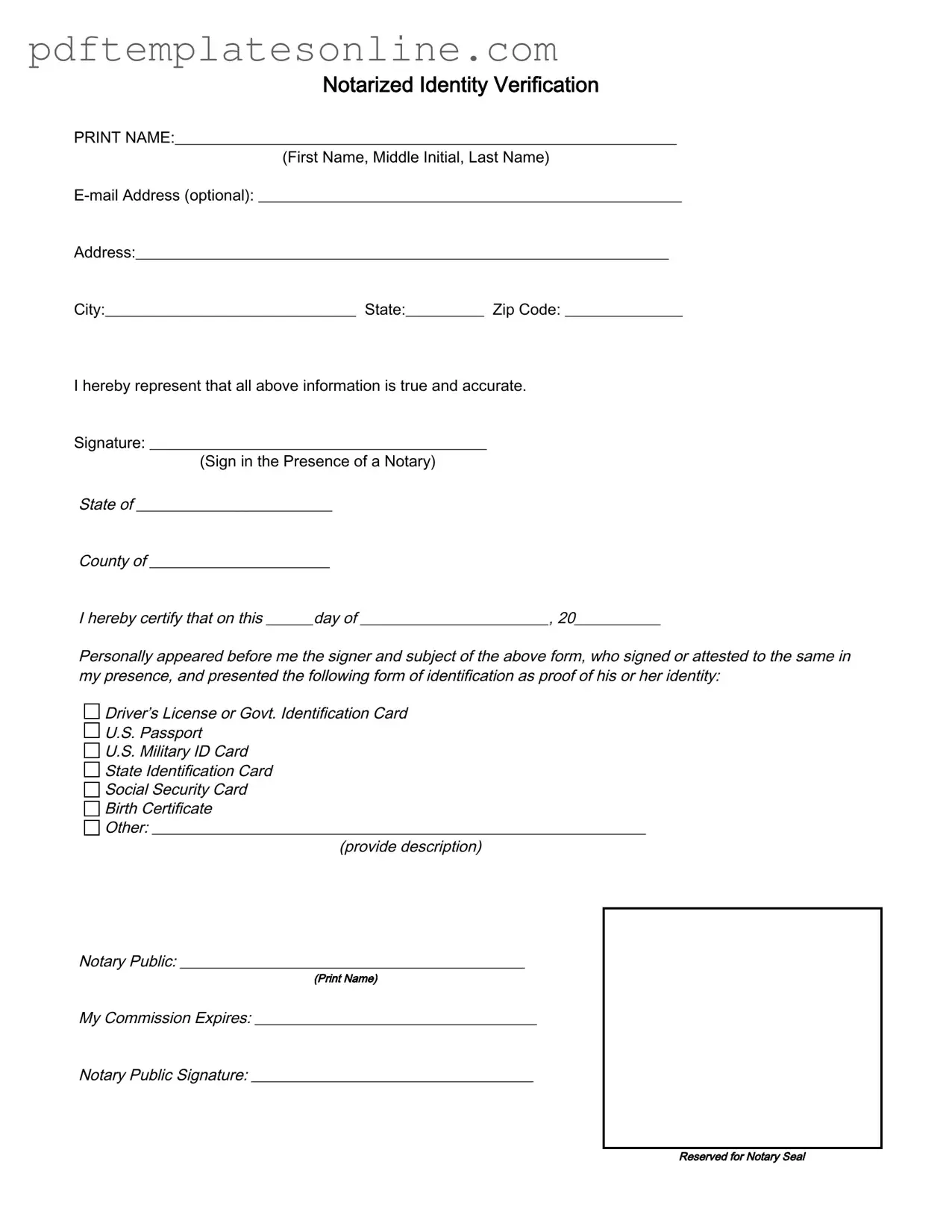Blank Notarized Identity Verification Form
The Notarized Identity Verification form is a document used to confirm an individual's identity through a notary public. This form requires personal details, including the individual's name and address, and it must be signed in the presence of a notary. By providing proof of identity, such as a driver's license or passport, the signer ensures the accuracy of the information provided.
Access Notarized Identity Verification Editor Now
